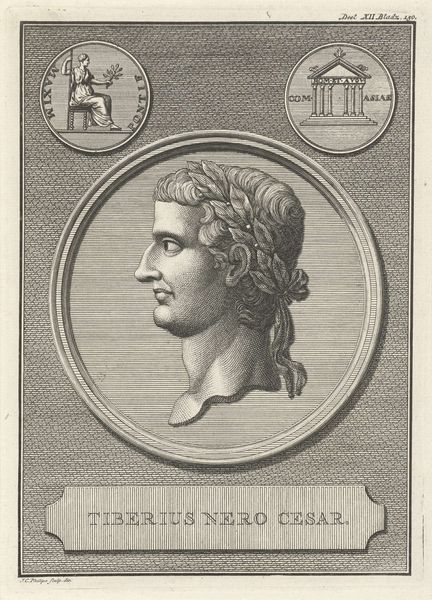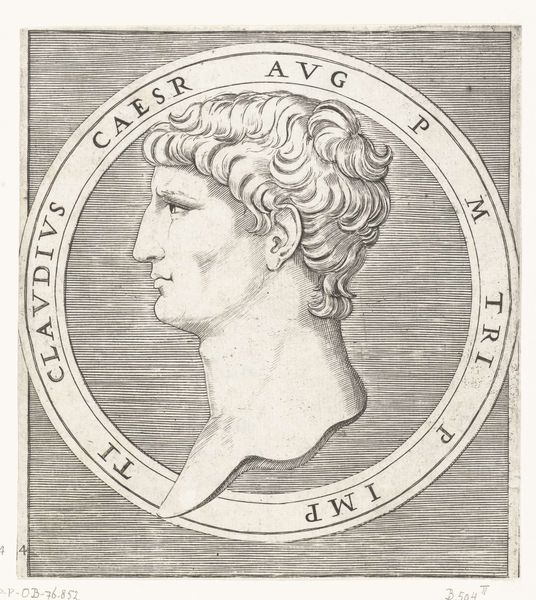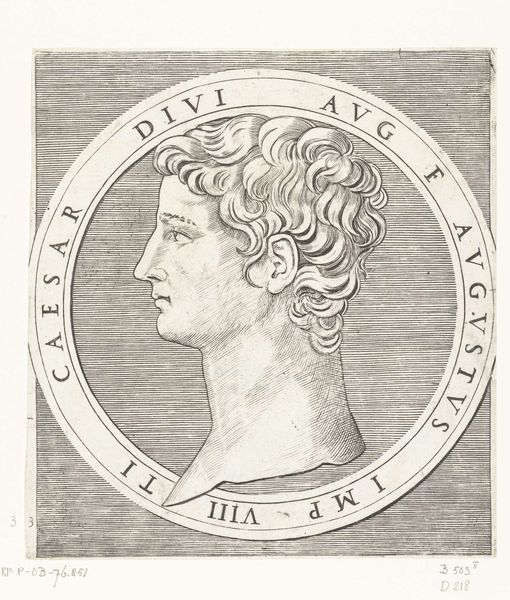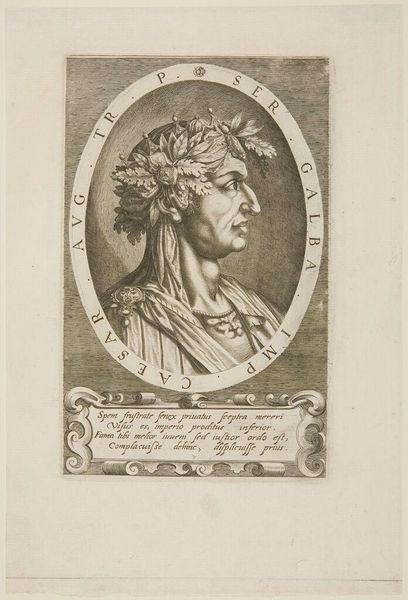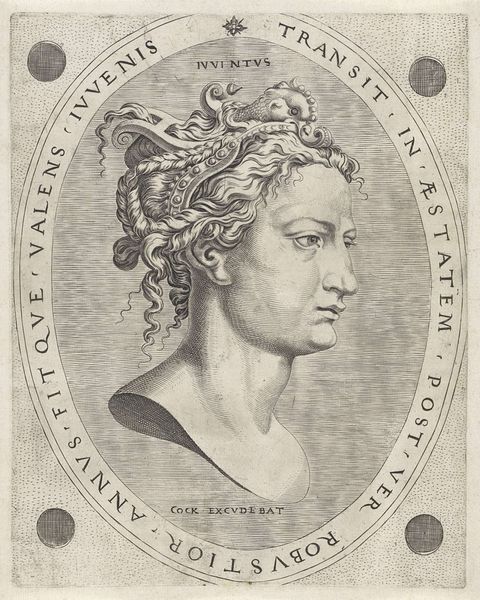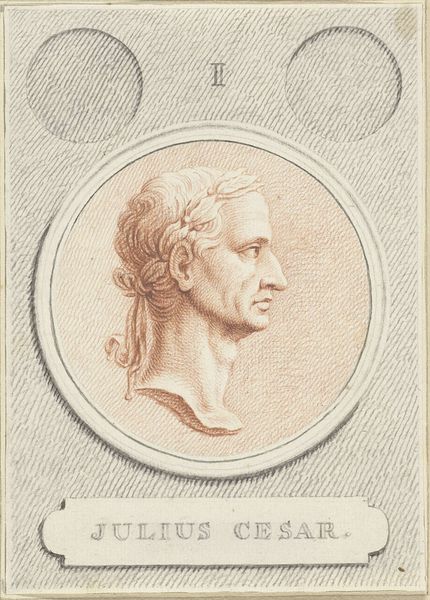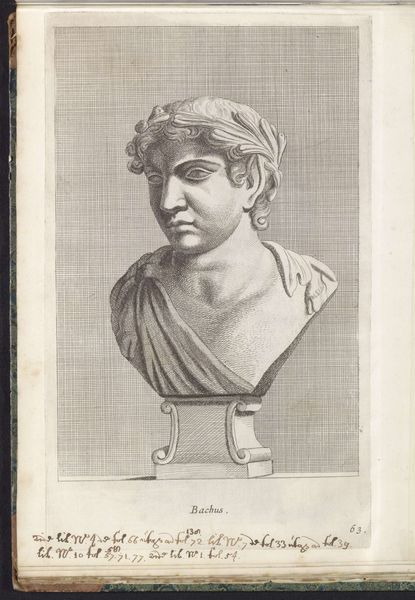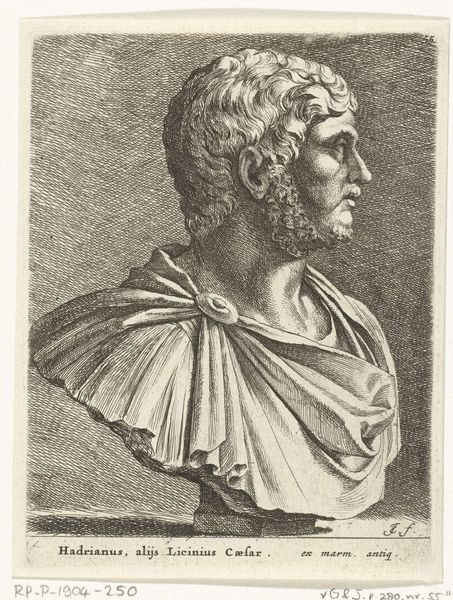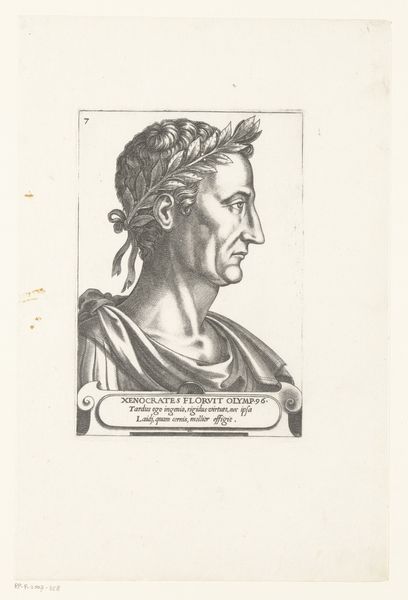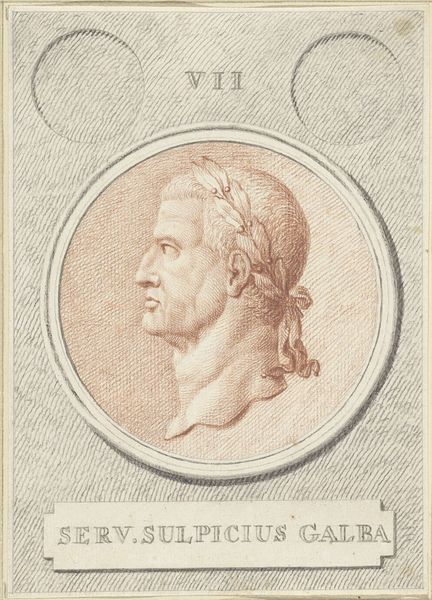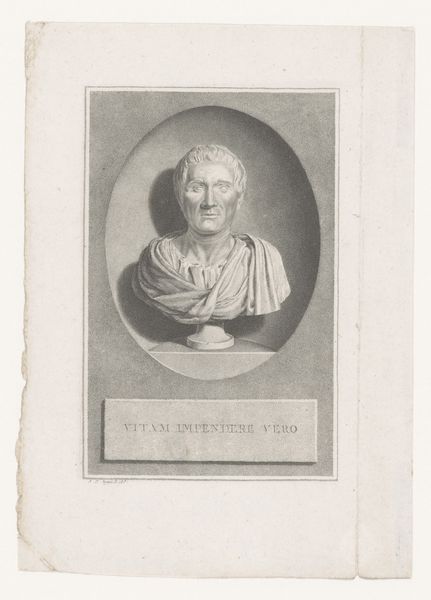
print, engraving
#
portrait
#
baroque
# print
#
old engraving style
#
traditional media
#
classical-realism
#
form
#
historical photography
#
ancient-mediterranean
#
line
#
history-painting
#
engraving
Dimensions: height 183 mm, width 132 mm
Copyright: Rijks Museum: Open Domain
Curator: Here we have Jan Caspar Philips' 1746 engraving, "Portret van keizer Claudius I," part of the Rijksmuseum collection. Editor: My first impression is one of austerity, almost a stern dignity. The line work is incredibly precise, creating a sense of formal control. Curator: Philips was a master of engraving, and this work demonstrates his incredible skill. Look closely at the cross-hatching—it’s the key to creating form and texture on what is, at its essence, a flat surface. He clearly understood how to manipulate the tools of his trade to achieve such a classical realism. Editor: But what are we meant to understand by looking at Claudius here? It’s not simply a portrait of a man. The surrounding Britannia and Victoria Gothic details position Claudius within specific historical narratives. It links him to notions of empire and conquest, loaded terms considering the social hierarchies of that period and persisting colonial echoes even in Philips' time. Curator: Absolutely. The very act of creating and circulating this print is indicative of a developing print culture and the social mobility of images in 18th-century Europe. This engraving could have been purchased and displayed, contributing to a collective understanding – or perhaps a romanticized view – of Roman imperial power. Consider also the paper it is printed on; the inks, and the labour involved in producing this artwork, all elements that shape its context. Editor: I also find it fascinating how this representation of Claudius intersects with ideas of leadership and authority. We might ask: who was this image designed to serve, and whose voices are amplified—or silenced—in its celebration of imperial Rome? Does the material prosperity enabled by empire excuse violence and injustice? Curator: And did that production occur in a guild system with apprentice laborers, and how did they view their labor in representing imperial authority? These layers of making contribute to the context as well. Editor: Exactly. Seeing this, it makes you wonder how many of the engravers’ contributions went unacknowledged while perpetuating complex sociopolitical statements of power. Curator: It is remarkable how much information is packed into this single sheet of paper. Editor: Truly a snapshot that forces us to consider many aspects of human engagement at that period.
Comments
No comments
Be the first to comment and join the conversation on the ultimate creative platform.
